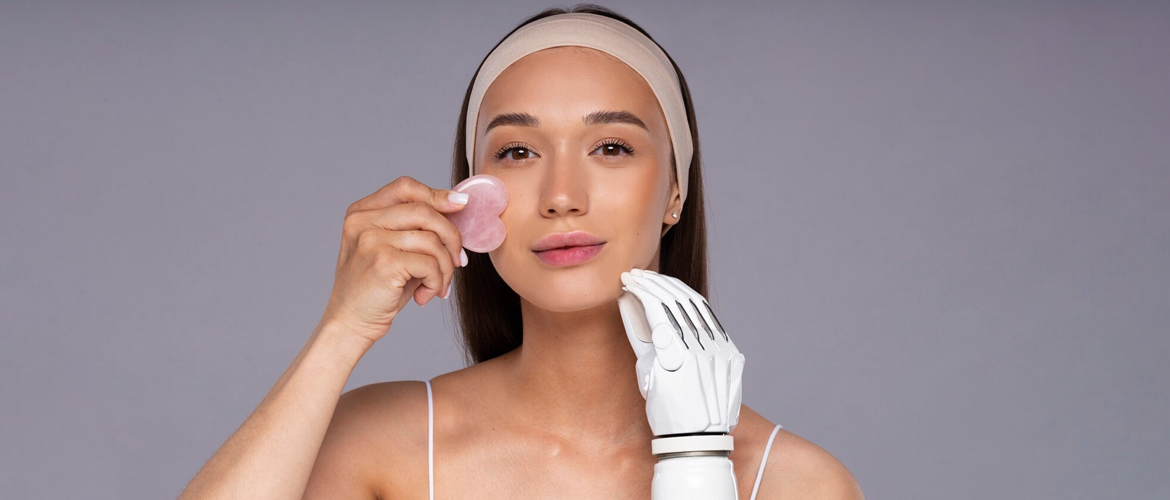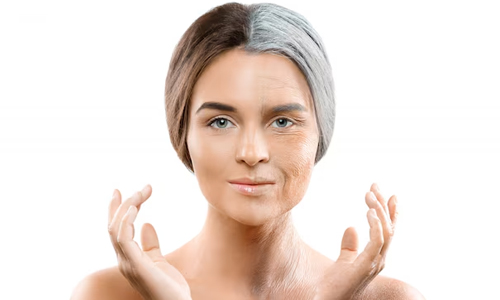Skin cycling is one such skincare trend that optimizes skin benefits by aligning with the skin’s natural cycles. The term Skin cycling was coined by New York dermatologist Whitney Bowe, MD. It has become highly popular with over 3.5 billion TikTok views alone among the captivating content.
This blog will decode the mysterious secret to skin cycling, including its stages, factors affecting it, its benefits, stages, routine, and do’s and don’ts.
Table of Contents
- What is Skin Cycling?
- Stages of Skin Cycling
- Skin Cycling Process
- Factors Affecting Skin Cycling
- Environmental Factors
- Benefits of Skin Cycling
- Tips for a Healthy Lifestyle
What is Skin Cycling?
Skin cycling refers to the natural skin renewal process, where old skin cells are shed and new skin cells are generated. leverages the idea of using different skincare products on different days to give the skin time to recover from potent active ingredients and reduce the risk of irritation. A skin cycling routine typically spans four days, but this can vary based on individual skin types and needs. This process is crucial for maintaining healthy, vibrant skin.
Let’s get started to know in detail,
Stages of Skin Cycling
Skin cycling is the natural renewal process of the skin, involving several key stages. Understanding this cycle helps in maintaining healthy, vibrant skin. Here’s a breakdown of the flow or process of skin cycling:
1. Exfoliation (Days 1-3)
Process: The outer layer of dead skin cells (stratum corneum) is shed.
How to Support: Use gentle exfoliants like alpha hydroxy acids (AHAs) or beta hydroxy acids (BHAs). Avoid over-exfoliating to prevent irritation.
2. Cell Turnover (Days 4-14)
Process: New skin cells (keratinocytes) are produced in the basal layer of the epidermis. These cells gradually move upwards to replace the shed cells.
How to Support: Maintain a healthy skincare routine with hydrating serums and moisturizers to keep the skin barrier intact.
3. Moisturization (Ongoing)
Process: New skin cells require adequate hydration to function properly and to maintain the skin’s elasticity.
How to Support: Use humectants (like hyaluronic acid) to draw moisture into the skin and occlusives (like oils) to lock it in.
4. Repair and Protection (Ongoing)
Process: The skin repairs itself from daily damage (UV exposure, pollution) and produces collagen and elastin.
How to Support: Apply antioxidants (like vitamin C) and retinoids to aid in repair and collagen production. Always use broad-spectrum sunscreen to protect against UV damage.
Skin Cycling Process
1. Exfoliation Phase:
Initial Shedding: Dead skin cells accumulate on the surface, creating a dull appearance.
Action: Gentle exfoliation removes these cells, revealing fresher skin underneath.
2. Cell Turnover Phase:
New Cell Generation: Keratinocytes are generated in the basal layer.
Migration: These cells move upwards through the epidermis layers over about 14 days.
Maturation: As they move up, they mature and become part of the protective outer layer.
3. Moisturization Phase:
Hydration: New cells require hydration to function optimally.
Barrier Function: Proper moisturization helps maintain the skin’s barrier, preventing dryness and irritation.
4. Repair and Protection Phase:
Damage Repair: The skin continually repairs itself from minor damage and environmental stressors.
Collagen Production: Fibroblasts in the dermis produce collagen, maintaining skin structure and elasticity.
Protection: Daily application of sunscreen and antioxidants protects the skin from further damage and supports ongoing repair.
Factors Affecting Skin Cycling
a. Age
b. Slower Turnover
Skin cell turnover slows down as we age, leading to a buildup of dead skin cells, which can make the skin appear dull and less radiant.
Related: How to stop the aging of skin?
c. Thinner Skin
The skin also becomes thinner and less elastic with age, affecting its overall texture and appearance.
Environmental Factors
2. UV Exposure
Ultraviolet (UV) radiation from the sun can damage skin cells and accelerate the aging process, disrupting normal skin cycling.
3. Pollution
Environmental pollutants can clog pores and contribute to skin inflammation and damage.
4. Climate
Extremes in temperature and humidity can affect the skin barrier and hydration levels, impacting the renewal process.
Lifestyle
1. Diet
A diet lacking in essential nutrients can impair skin health and slow down the skin renewal process.
2. Hydration
Proper hydration is essential for maintaining skin elasticity and facilitating the shedding of dead skin cells.
3. Sleep
Adequate sleep allows for cellular repair and regeneration, supporting healthy skin cycling.
4. Stress
Chronic stress can increase cortisol levels, leading to inflammation and slower cell turnover.
5. Hormonal Changes
Hormonal fluctuations during puberty, pregnancy, menstrual cycles, and menopause can affect skin cycling. Hormones like estrogen and progesterone play a role in skin health and regeneration.
Benefits of Skin Cycling
1. Reduced Irritation
By spacing out the use of potent active ingredients, skin cycling minimizes the risk of irritation, dryness, and sensitivity.
2. Enhanced Effectiveness
Allows the skin to absorb and respond better to active ingredients by not overwhelming it with multiple products simultaneously.
3. Balanced Routine
It incorporates a mix of exfoliation, treatment, and recovery, ensuring comprehensive skincare that addresses various skin concerns.
4. Adaptability
Can be tailored to individual skin needs and concerns. For example, those with sensitive skin might extend the recovery phase, while those with more resilient skin might shorten it.
5. Promotes Healthy Skin Renewal
Skin cycling is the natural process by which your skin sheds old, dead cells and replaces them with fresh, new ones. Supporting this process keeps your skin looking vibrant and youthful.
6. Maximizes Product Efficacy
When your skin is actively cycling, it’s more receptive to skincare products. This means the products you use, such as serums and moisturizers, can penetrate deeper and work more effectively.
7. Supports Overall Skin Health
A well-supported skin cycling process is indicative of overall skin health, as factors like diet, hydration, and lifestyle choices influence it.
Tips for a Healthy Lifestyle
- Drink plenty of water to keep skin cells hydrated and support their function.
- Aim for 7-9 hours of quality sleep per night for cellular repair and regeneration.
- Practice stress management techniques like meditation, exercise, and relaxation to reduce the impact of stress on the skin.
- Always patch-test new products before incorporating them into your routine.
- Use broad-spectrum sunscreen daily, especially important when using exfoliants and retinoids that can increase sun sensitivity.
- Keep the skin well-hydrated throughout the cycle to support the skin barrier.
- Pay attention to how your skin responds and adjust the routine as needed. If irritation occurs, increase recovery days.
Conclusion
Hence, understanding the factors that affect it and adopting practices that support efficient skin renewal can help you achieve and maintain radiant, youthful-looking skin.
Give it a try and experience the difference!
Valentina
Related posts
Women Tips
Privacy Overview
| Cookie | Duration | Description |
|---|---|---|
| cookielawinfo-checkbox-analytics | 11 months | This cookie is set by GDPR Cookie Consent plugin. The cookie is used to store the user consent for the cookies in the category "Analytics". |
| cookielawinfo-checkbox-functional | 11 months | The cookie is set by GDPR cookie consent to record the user consent for the cookies in the category "Functional". |
| cookielawinfo-checkbox-necessary | 11 months | This cookie is set by GDPR Cookie Consent plugin. The cookies is used to store the user consent for the cookies in the category "Necessary". |
| cookielawinfo-checkbox-others | 11 months | This cookie is set by GDPR Cookie Consent plugin. The cookie is used to store the user consent for the cookies in the category "Other. |
| cookielawinfo-checkbox-performance | 11 months | This cookie is set by GDPR Cookie Consent plugin. The cookie is used to store the user consent for the cookies in the category "Performance". |
| viewed_cookie_policy | 11 months | The cookie is set by the GDPR Cookie Consent plugin and is used to store whether or not user has consented to the use of cookies. It does not store any personal data. |




